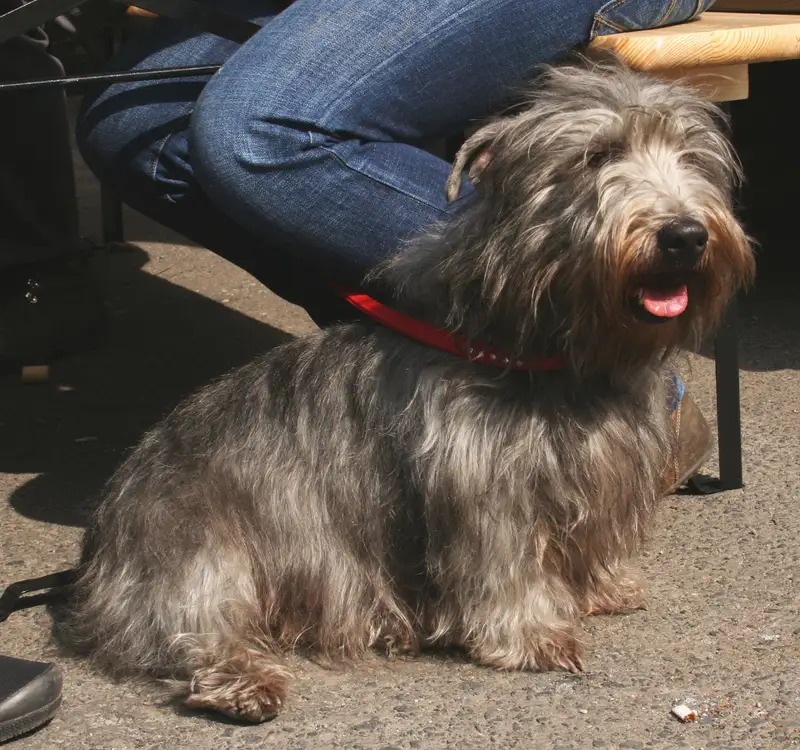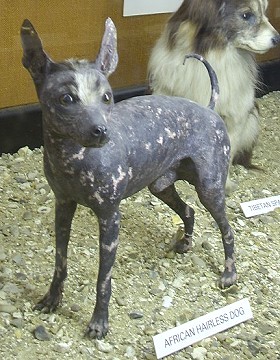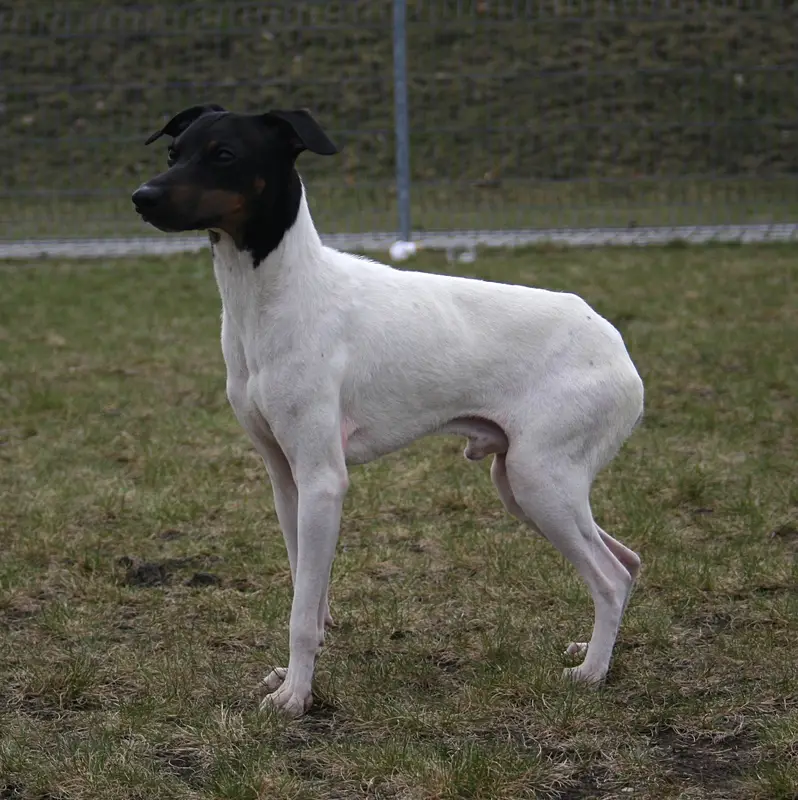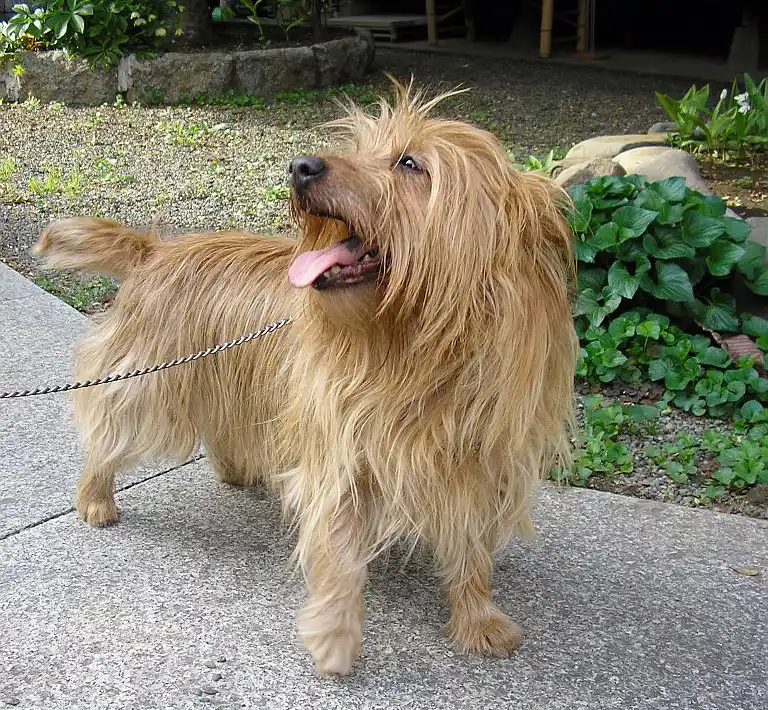Staffordshire Bull Terrier
The Staffordshire Bull Terrier is a medium-sized, affectionate breed known for its playful nature and loyalty. Often called 'nanny dogs,' they are great with children and thrive on companionship.
Overview
🐕Breed Overview
✨Key Traits
💡What Makes Staffordshire Bull Terrier Special
Staffordshire Bull Terriers are characterized by their muscular build and strong jaws, giving them a powerful appearance. However, their temperament is gentle and loving, especially towards children.
They are known for their intelligence and eagerness to please, making training a rewarding experience. Their playful spirit often leads to humorous antics, and they enjoy engaging in various activities with their families.
Despite their history as fighting dogs, modern Staffies are friendly and sociable, making them excellent companions for families and individuals alike. Their adaptability allows them to thrive in different environments, from urban apartments to rural homes, as long as they receive adequate exercise and social interaction.
The Staffordshire Bull Terrier, affectionately known as the Staffie, is a medium-sized breed that embodies strength, loyalty, and affection. Originating from England, this breed has a rich history rooted in bull baiting and dog fighting, yet it has transformed into a beloved family companion known for its gentle nature, especially around children. With a stocky build, broad head, and a smooth coat that comes in various colors, the Staffie is both muscular and agile, making it a striking presence.
Their playful and affectionate demeanor has earned them the nickname 'nanny dog,' reflecting their protective instincts towards children. Living with a Staffordshire Bull Terrier means embracing an energetic and fun-loving companion. They require daily exercise, including walks and playtime, to keep them physically and mentally stimulated.
Despite their strong appearance, they are known for their friendly disposition and adaptability, making them suitable for various living environments, from apartments to homes with yards. Training a Staffie is a rewarding experience, as they are intelligent and eager to please, although they may exhibit some stubbornness. Early socialization and consistent training are essential to ensure they develop into well-rounded pets.
While they may not excel as watchdogs due to their friendly nature, their loyalty and protective instincts make them devoted family members. The Staffordshire Bull Terrier is generally healthy, with a lifespan of 12 to 14 years, but potential owners should be aware of hereditary health issues such as cataracts. Overall, the Staffie is a remarkable breed that thrives on human companionship, making them an ideal choice for families seeking a loving and playful dog.
🎉Fun Facts
Despite their tough appearance, they are known for their affectionate demeanor.
Known as 'nanny dogs' for their gentle nature with children.
Staffies are often described as having a playful sense of humor.
Staffordshire Bull Terriers are often misunderstood due to their fighting history.
They are highly adaptable and can thrive in various living situations.
Breed Characteristics
Family & Friends
Good Behavior
Get Up & Go
Household Harmony
Temperament & Personality
✨Key Traits
🐕Core Temperament
The Staffordshire Bull Terrier is characterized by its fearless and loyal nature. They are known for their affectionate demeanor, particularly towards children, and are often described as gentle giants.
Despite their muscular build, they are not aggressive by nature and are generally friendly with people. However, they may exhibit some wariness towards unfamiliar dogs, especially those that challenge them.
Their playful spirit and love for human interaction make them excellent companions, but they require consistent training and socialization to ensure they develop into well-mannered pets.
💫Personality Profile
The Staffordshire Bull Terrier is known for its affectionate and playful personality. ' Staffies are typically friendly and enthusiastic, displaying a zest for life that is infectious.
They thrive on human companionship and enjoy being involved in family activities. While they can be strong-willed, consistent training and socialization help them become well-rounded pets.
Their playful nature means they enjoy games and interactive play, making them a fun addition to any household.
🔊Vocal Tendencies
Staffordshire Bull Terriers have a moderate noise level. They may bark to alert their owners of strangers or when playing, but they are not excessive barkers.
Their vocalizations can include playful barks, growls during play, and occasional whining when seeking attention. While they are generally not known for being overly vocal, they will express themselves when necessary, especially if they feel their family is threatened or if they are excited during playtime.
Training can help manage their barking tendencies, ensuring they communicate appropriately without excessive noise.
Affection & Social Traits
Energy & Activity
Communication Style
Care Requirements
🏃♂️Exercise Requirements
Daily Exercise
The Staffordshire Bull Terrier is an energetic breed that requires a moderate amount of exercise to maintain its physical and mental well-being. Ideally, they should engage in at least 60 minutes of exercise each day, which can be broken down into multiple sessions. Activities such as brisk walks, playtime in a secure yard, and interactive games like fetch or tug-of-war are excellent for keeping them stimulated.
They also enjoy agility training and other dog sports that challenge their agility and intelligence. Puppies may require shorter, more frequent play sessions to accommodate their developing bodies, while senior dogs may benefit from gentler activities to avoid strain. Regular exercise not only helps manage their weight but also reduces the likelihood of behavioral issues stemming from pent-up energy.
Insufficient exercise can lead to boredom, which may manifest in destructive behaviors or excessive barking.
Preferred Activities
🏠Living & Adaptability
Space Requirements
Staffordshire Bull Terriers adapt well to various living environments, but they thrive in homes with access to a secure outdoor space. While they can live comfortably in apartments, it's essential to provide them with daily walks and playtime to meet their exercise needs.
A small yard or nearby park is ideal for their physical activity. Their medium size makes them suitable for both urban and suburban settings, but they should not be confined for long periods as they require social interaction and mental stimulation.
Lack of space can lead to anxiety and behavioral issues, so it's crucial to ensure they have enough room to move and play.
Climate Preference
🍲Feeding Guide
Schedule
Food Types
Portion Size
Special Nutritional Needs
Staffordshire Bull Terriers may benefit from a diet rich in protein to support their muscular build. It's important to monitor their weight, as they can be prone to obesity if overfed.
Owners should avoid feeding them table scraps or low-quality foods that may lead to health issues. Regular veterinary check-ups can help determine any specific dietary needs based on the dog's health and activity level.
✨Grooming Requirements
Grooming Overview
The Staffordshire Bull Terrier has a short, smooth coat that requires minimal grooming. Regular brushing once a week is sufficient to remove loose hair and keep the coat healthy.
Bathing should be done as needed, typically every few months or when the dog gets particularly dirty. Their ears should be checked regularly for dirt and wax buildup, and their nails should be trimmed every few weeks to prevent overgrowth.
Overall, the grooming routine for a Staffie is straightforward and low-maintenance, making them suitable for owners who prefer a breed with minimal grooming needs.
Care Schedule
Brush weekly; bathe as needed (every few months); trim nails every 2-4 weeks.
Health Profile
⚕️Health Care
Regular health care is essential for extending the lifespan of Staffordshire Bull Terriers. Routine veterinary check-ups, vaccinations, and preventive treatments can help catch health issues early.
Maintaining a healthy weight through proper diet and exercise is crucial, as obesity can lead to various health problems. Additionally, dental care is important, as dental disease can affect overall health.
Owners should be proactive in monitoring their dog's health and seeking veterinary advice when necessary.
Health Issues Overview
⏳Average Lifespan
Genetic Factors
Genetics play a crucial role in the Staffordshire Bull Terrier's lifespan, with certain hereditary health issues being more prevalent in the breed. Responsible breeding practices focusing on genetic diversity can help reduce the risk of inherited conditions.
Potential owners should seek reputable breeders who conduct health testing for common genetic disorders, such as cataracts and L2 HGA. Understanding the genetic background of a dog can provide insights into potential health risks and help owners make informed decisions about their pet's care.
Living Conditions
The Staffordshire Bull Terrier's lifespan can be influenced by various environmental factors, including housing conditions, climate, and social interactions. Dogs that live in a stable, loving environment with regular exercise and mental stimulation tend to live longer, healthier lives.
Exposure to extreme temperatures can affect their health; thus, they should be kept in a comfortable climate. Regular veterinary care, a balanced diet, and a safe living space contribute significantly to their longevity.
Social interactions with humans and other pets also play a vital role in their overall well-being, reducing stress and promoting happiness.
🏥Common Health Issues
Hereditary Cataracts
Warning Signs
🔬Diagnosis
Veterinarians typically diagnose cataracts through a physical examination and may use specialized equipment to assess the eyes.
💊Treatment
Surgical removal of the cataract may be recommended if it significantly affects vision.
📝Management Tips
Regular veterinary check-ups can help monitor eye health. If cataracts develop, surgical options may be available to restore vision.
L-2-Hydroxyglutaric Aciduria (L2 HGA)
Warning Signs
🔬Diagnosis
DNA testing can confirm the presence of L2 HGA in affected dogs.
💊Treatment
There is no cure, but management focuses on supportive care.
📝Management Tips
Regular veterinary monitoring and supportive care can help manage symptoms. Genetic counseling is recommended for breeding dogs.
Mast Cell Tumors
Warning Signs
🔬Diagnosis
Diagnosis is typically made through a biopsy of the tumor.
💊Treatment
Surgical removal of the tumor is often the primary treatment.
📝Management Tips
Early detection is crucial; regular veterinary check-ups can help identify any lumps or growths early.
🛡️Preventive Care
🔬Hip Evaluation
This test assesses the dog's hip joints for dysplasia, which can lead to arthritis and mobility issues. Early detection allows for management strategies to be implemented.
📅 Annually after 2 years of age or as recommended by a veterinarian.
🔬DNA Test for Hereditary Cataracts
This test checks for genetic predisposition to cataracts, allowing for informed breeding decisions and early intervention if necessary.
📅 Before breeding and as recommended by a veterinarian.
🔬DNA Test for L-2-Hydroxyglutaric Aciduria
This DNA test identifies the presence of L-2-Hydroxyglutaric Aciduria, a metabolic disorder that can affect behavior and cognitive function.
📅 Before breeding and as recommended by a veterinarian.
Training
🧠Intelligence & Trainability
💪Work Drive
Staffordshire Bull Terriers thrive on companionship and enjoy having tasks to complete. They are intelligent and eager to learn, making them suitable for various activities, including obedience training, agility, and even therapy work.
Engaging them in structured activities not only satisfies their need for mental stimulation but also reinforces their bond with their owners. Without sufficient engagement, they may become bored and exhibit undesirable behaviors, so it's crucial to provide them with regular challenges and interactions.
⚠️Training Considerations
While Staffordshire Bull Terriers are generally eager to please, they can exhibit strong-willed behaviors if not properly trained. Common challenges include stubbornness during training sessions and a tendency to become overly excited during play.
To overcome these challenges, consistent and positive reinforcement training methods are essential. Early socialization with other dogs and people can help mitigate any potential aggression towards unfamiliar dogs.
Providing mental stimulation through puzzle toys and training exercises can also help channel their energy positively.
📝Training Tips
Training a Staffordshire Bull Terrier requires a balance of firmness and kindness. Positive reinforcement techniques, such as treats and praise, work best to motivate this breed. Start training early, focusing on basic commands and socialization with other dogs and people.
Consistency is key; establish a routine and stick to it. Incorporating fun activities, like agility training or obedience classes, can keep them engaged and mentally stimulated. Be patient and understanding, as some Staffies may take longer to grasp certain commands.
Regular training sessions will strengthen the bond between owner and dog, enhancing their responsiveness and behavior.
History & Heritage
📜Origin Story
The Staffordshire Bull Terrier's story begins in the bustling towns of England during the 1800s, where blood sports were a popular form of entertainment. Breeders sought to create a dog that was both strong and agile, leading to the crossbreeding of bulldogs with local terriers.
This resulted in the bull-and-terrier dogs, known for their gameness and loyalty. As the popularity of blood sports waned, these dogs found new roles as companions and family pets.
' Despite facing challenges due to its fighting heritage, the Staffordshire Bull Terrier has emerged as a beloved breed, recognized for its loyalty and playful spirit.
⏳Development History
The Staffordshire Bull Terrier's origins trace back to the early 19th century in England, where it was developed from a mix of bulldogs and terriers. Initially bred for blood sports like bull baiting, the breed was characterized by its strength and tenacity.
However, with the banning of such sports in 1835, breeders shifted their focus towards creating a companionable dog. The breed was officially recognized by the UK Kennel Club in 1935, and its popularity grew as families appreciated its affectionate nature.
Over the years, the Staffordshire Bull Terrier has maintained its status as a loyal companion, adapting to modern family life while retaining its robust physique and spirited personality.
🛡️Purpose & Historical Role
Originally bred for bull baiting and dog fighting, the Staffordshire Bull Terrier's purpose has shifted significantly over the years. Today, they are primarily valued as companion animals, known for their affectionate and loyal nature.
Their history of bravery and tenacity has translated into a strong bond with families, particularly with children. The breed's ability to adapt to various roles, from family pet to performance competitor in dog sports, showcases its versatility and enduring appeal.
🏺Cultural Significance
The Staffordshire Bull Terrier, often affectionately referred to as 'Staffies,' has a rich history in England, where it was originally bred for bull baiting and later dog fighting. Despite its tumultuous past, the breed has evolved into a beloved family companion, known for its affectionate nature, particularly towards children.
The term 'nanny dog' reflects their gentle demeanor and protective instincts around kids, making them a popular choice for families. Their reputation has been marred by breed-specific legislation and misconceptions, but advocates emphasize their loyalty and loving temperament, showcasing their role as devoted family pets.
Conservation Status
This breed is well-established with healthy population numbers.









